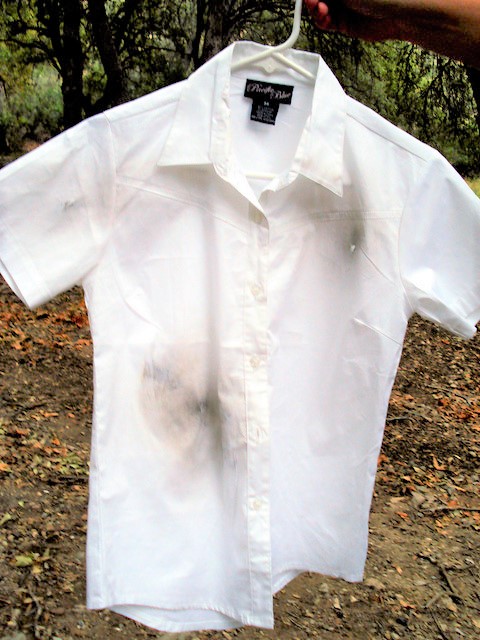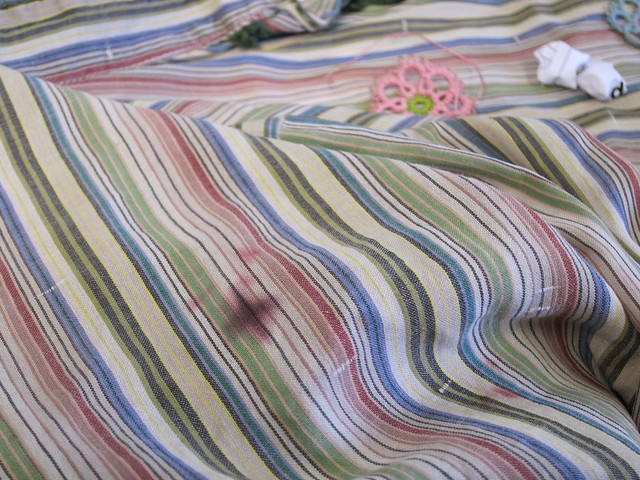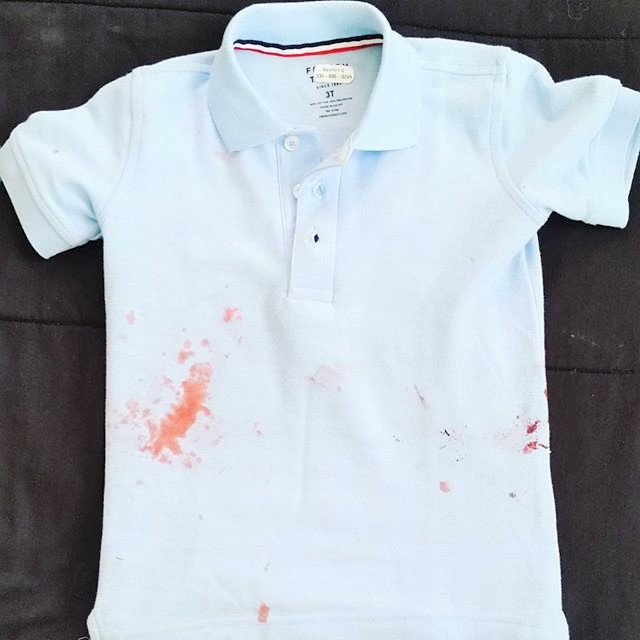Last updated on April 8th, 2023 at 03:27 pm
Everyone has, at some point, dealt with a stubborn stain on their cloth. Such stains could result from food spillage, improper rinsing, grease, and sometimes improper cleaning. This can make your fabric look used and degraded.
And while removing fresh stains from your clothes is a straightforward process using the proper techniques, dealing with stains on a dry cloth can be challenging.
Do not fret next time you notice stains in your dry clothes. Here are practical steps to remove them and give your closet a clean and good smell.
- Identify the type of stain: This will help you choose the appropriate type of stain remover. Some common types of stains in the market include ink, oil-based, grass, food, and blood stains.
- Pre-treat the stain: Apply stain remover or a pre-treatment detergent to the affected area and let it sit for some time per the manufacturer’s instructions.
- Scrub the stain: Scrub the pre-treated stain using a soft-bristled brush. Be gentle to avoid damaging the fabric.
- Soak the garment: Soak the garment again in cold water for about 30 minutes if you notice traces of stain after pre-treating and scrubbing. You can add more laundry detergent or stain remover to enhance its power.
- Wash the garment: Place the cloth in a washing machine to clean after soaking. Check the care label on the fabric to ensure you’re using the appropriate water temperature.
- Check for more stain traces: Repeat the pre-treatment, soaking, and washing process if you notice any stain traces.
- Dry the garment: Dry it according to the care label instructions once the stain is entirely removed.
How to Remove Tough Stains from Clothes at Home

Dealing with stains on clothes at home can be challenging if you’re unsure what to do. Depending on the type of stain, here are some methods that work.
- Red wine stains: Sprinkle salt and warm water on the stain and let it sit for 30 minutes before washing it off. Soak the garment in a solution of water and vinegar for the same duration if the stain persists.
- Grease or oil stain: Rub laundry detergent or dish soap on the affected area, leave for 5-10 minutes, then wash with hot water.
- Ink stains: Use rubbing alcohol. Apply small amount on the stained region and leave for a few minutes before cleaning. Try baking soda and water paste if the stain is stubborn.
- Sweat stains: Mix water with baking soda to form a paste and apply it to the stain. Leave for 30 minutes, then rinse thoroughly.
- Blood stains: Soak the fabric in cold water for 30 minutes. Apply hydrogen peroxide on the affected area and let it sit for a few minutes, then rinse it.
How to Remove Stains from White Clothes: Home Remedies
There are several remedies for removing stains from white clothes at home using ready ingredients you may already have in your kitchen.
Hydrogen peroxide, vinegar, salt, and lemon juice, when appropriately mixed with water, will clean off stains from white clothes within minutes.
Always test the solution on a small area of the garment and monitor the reaction before applying it to the garment.
How to Remove Stains from Clothes Caused by Other Clothes
Removing dye transfer or stains caused by other clothes can be a headache. However, using oxygen bleach and water, you can remove dye spots on clothes caused by other clothes. But first, separate the clothes by color to prevent further staining.
- Dissolve an equal amount of oxygen bleach in hot water and add some cold water to cool it off.
- Soak your garment in the solution for 30 minutes then rinse.
- Alternately, use a color-safe bleach from a local store if the stains persist. Read the instruction on the package before using the bleach on your garments.
How to Remove Stain from Colored Clothes

Removing stains from colored clothes is different from other fabrics. You want to be keen enough to avoid messing up with the color of the cloth.
Here’s what to do.
- Identify the stain and pick the right treatment detergent for it.
- Use a paper towel or a clean piece of cloth to blot the stain. Do not rub the stain. Doing so may spread the stain further, making it harder to remove.
- Apply a laundry detergent or a stain remover on the affected area and leave it there for some time, then rinse with clean water.
- Check for any stain traces and repeat the process before drying the garment.
How to Remove Stain from Colored Clothes at Home
Removing stains from colored clothes is straightforward using over-the-counter stain removers and other laundry detergents.
However, you can also use some readily available detergents in your kitchen, like baking soda to clean stains from colored clothes. The faster you act, the easier it will be to remove the stain.
- Identify the stain and rinse it with cold water. Avoid hot water as it may set the stain on other areas of the fabric.
- Blot the stain with a clean paper towel. Do not rub.
- Mix equal water and baking soda to form a paste and apply it to the affected areas. Alternatively, use vinegar or dish soap to form a solution and apply it as a detergent.
- Wash the garment after treatment to get rid of the dye stains. Repeat the process if you still notice any traces of dye.
Always read the care instructions for guidelines or seek professional help on the garment before applying any stain removal solution technique.
How to Remove Old Stains from White Clothes
Stain removal on any fabric is quick and straightforward, using the proper detergents when the stain is fresh. Old stains on a bright color may require strong detergents and proper procedures to remove them altogether.
Rub a baking soda and water paste on the stains, leave it to soak in the fabric for some time, then rinse.
Vinegar and water solution can also remove old stains on white clothes after a few minutes of soaking and thorough cleaning. Refer to the fabric care instructions on the right water temperature to use.
